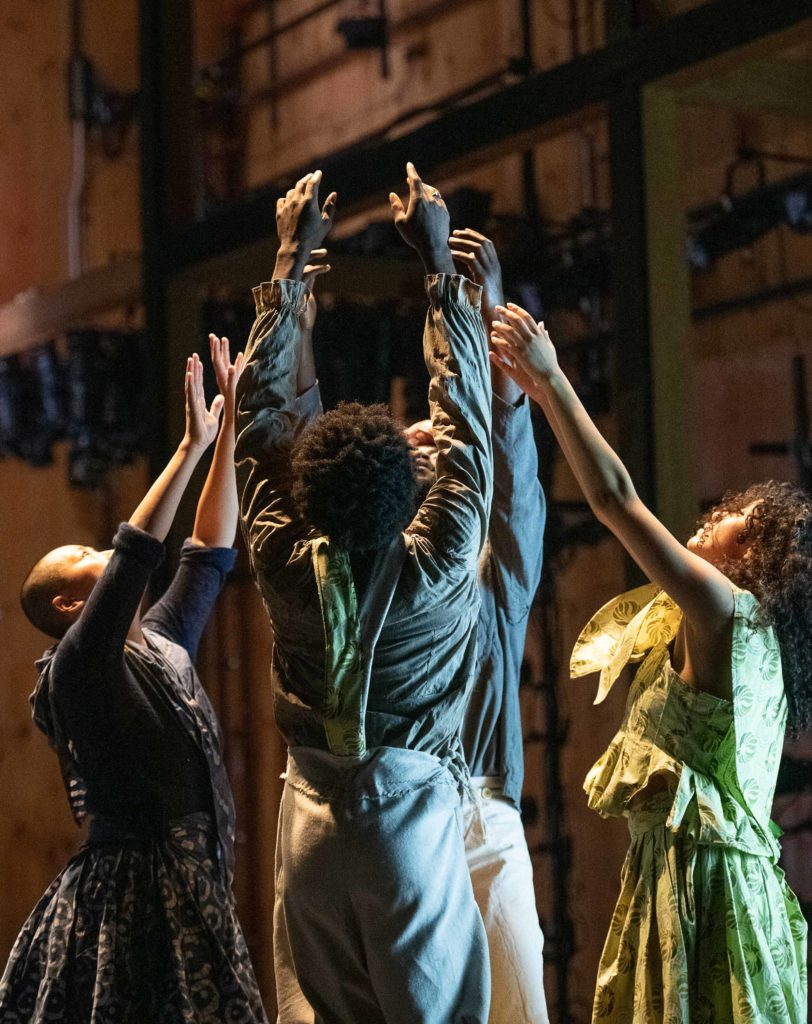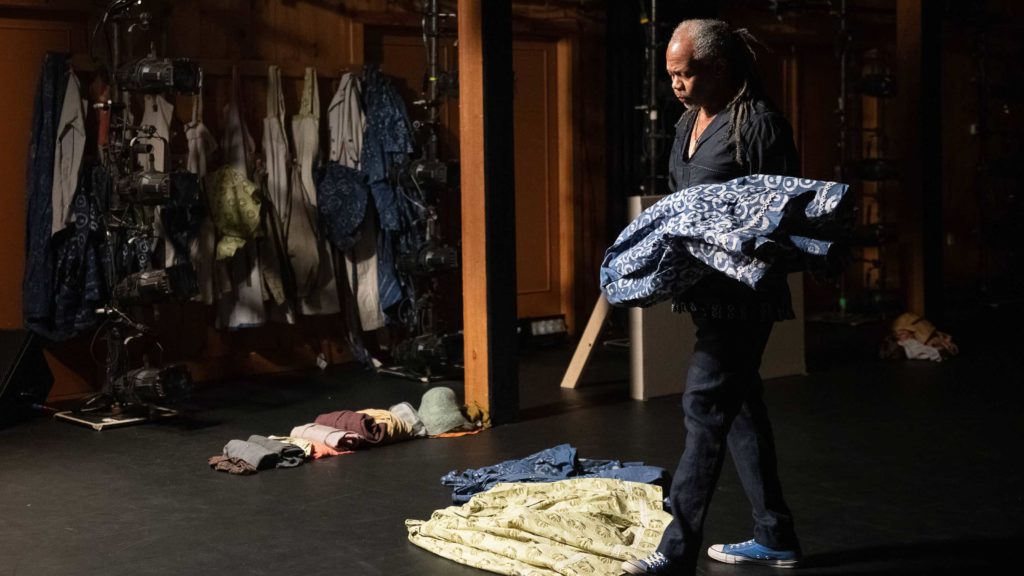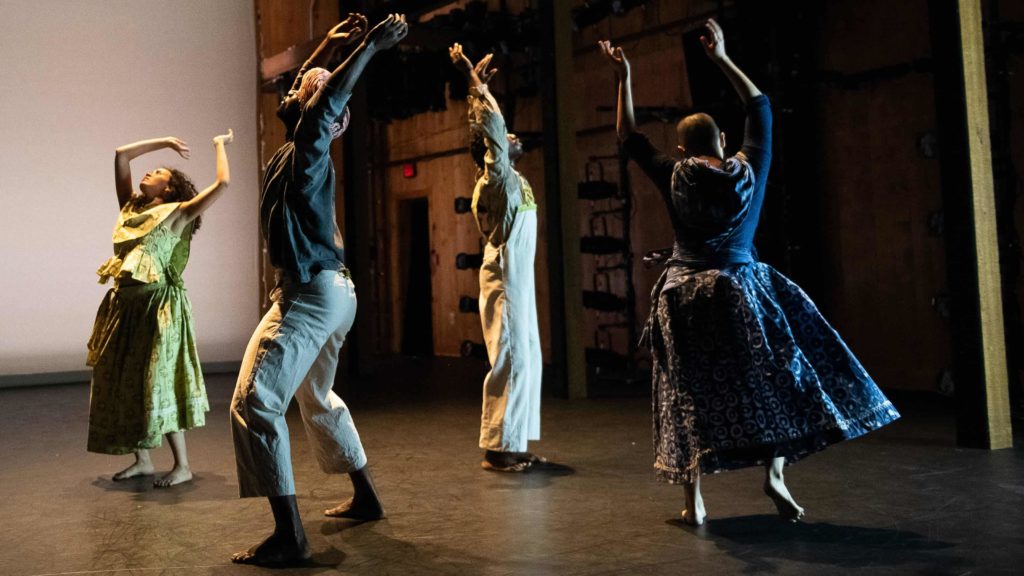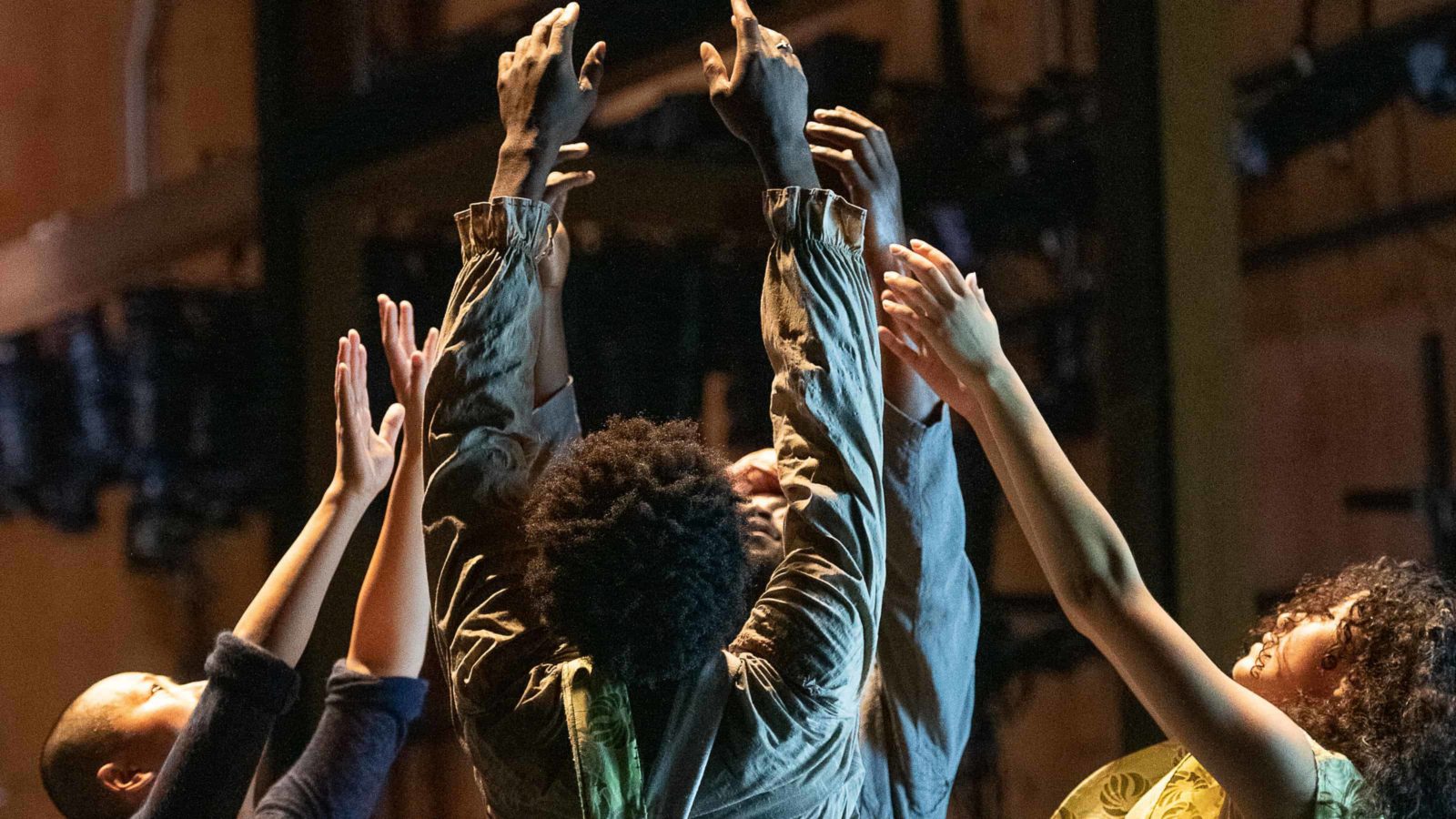Voices call and respond, as men and women move in a circle in a tresillo pulsing rhythm, keeping a beat with their hands and feet, and singing. They are moving together in an ecstatic ritual, a ring shout.
Here and in the Caribbean, people brought from Africa and enslaved created many new forms of dance, and this one is alive today on the Sea Islands off the coast of Georgia and in other places. At Jacob’s Pillow International Dance Festival in Becket, on a bright spring day, award-winning choreographer Reggie Wilson said it reminded him of the Shakers.
He spoke on a short break as his company rehearsed in residency. In July, Wilson and Fist and Heel from Brooklyn, N.Y., will perform Power, a new work, at the Pillow and at Hancock Shaker Village.



Reggie Wilson's Fist and Heel performance group will premiere Power, a new work inspired by black Shaker dance, at Jacob's Pillow International Dance Festival in 2019.
The work began six years ago, Wilson said, when he first heard the name of Mother Rebecca Cox Jackson. She was a free woman of color, and she founded her own Shaker community in Philadelphia. Jackson was a working woman, he said, a spiritual leader, a traveling preacher with her own way of being with the spirit, and the community she built went on to live and thrive for 60 years.
He sees in her a parallel to Mother Ann Lee, the founder of the Shakers.
“Listening to their inner voices gave them power,” he said, “in a time when illiterate, lower-class women didn’t have access to (authority and inspiration), or weren’t supposed to have.”
He began to wonder what worship could look like in Jackson’s community. How would prayer, music and dance have grown here over generations?
White Shaker communities held music as a central part of their worship, he said, and ecstatic dancing gave them their name.
African people who came to the Americas enslaved carried their own dance and music, belief and mythologies with them. And when they encountered Christianity, they infused it with their stories and rhythms, and created new forms of music — spirituals, Gospel.
How would they have encountered Shaker sound and movement?

Reggie Wilson's Fist and Heel performance group will premiere Power, a new work inspired by black Shaker dance, at Jacob's Pillow International Dance Festival in 2019.
Mother Rebecca Cox Jackson already had a following when she founded her community in Philadelphia, he said. Not many descriptions have survived to tell how they practiced their faith day-to-day, or how the community sustained itself. He can only imagine the gifts and inspirations her people felt and shared.
She wrote an autobiography, he said, and in her writing the separation between daily life and the spiritual realm was often thin: She would describe something practical and move freely into myth and belief, “how she was traveling through this world, this tree, this time, these stars.”
He found her former home in Philadelphia.
“It’s a power station now,” he said. “I knew then I was right with the title ‘Power.’ She prayed herself literate and obsessively listened to her inner voice.”
He thought about African-American religious songs talking about power — songs about Jesus, the blood of Jesus and the singer’s own strength … This light of mine, I’m going to let it shine.
In his work, Wilson often has often thought about the relationship between contemporary dance and African diaspora cultures. His choreography here may involve steps and movements from Brazil, Senegal, the American South and the Sea Islands, he said. He draws on his travels and his company members’ experiences of their own cultures and dance worlds.
And in Jackson’s community, he sees a freedom to celebrate them. Almost all Shaker communities had black brothers and sisters, he said, but in most, that meant a few people of color in a larger community that was white.
In Jackson’s community, in a community of black Shakers, how would their traditions have evolved? Would they have felt freer to involve their own African traditions in their worship, he wondered; would they have felt validated?
He often travels to research his work, he said, and with Jackson’s people in mind he came to Jacob’s Pillow last fall for a residency and learned that Hancock Shaker Village lay nearby.
Walking through the village moved him in profound ways he had not expected, he said. He had read about Shaker history, but in the fields and workshops and communal spaces he found a story different from what he had in mind.
He had thought of the Shakers as strictly ordered.
“It’s fascinating how much they were about advancing technology and human experience,” he said. “They were not just focused on the next life. They were building a Utopia here and now.”
Jackson lived for a time with the Shakers at Watervliet before she founded her own community and received their blessing. In creating choreography around her, Wilson has drawn on what scholars now believe Shaker dance looked like. The Enfield Singers have re-imagined a wide body of dances, he said, and many other choreographers and musicians have looked to the Shakers.
Aaron Copeland wrote his Appalachian Spring for Martha Graham, at her request, Wilson said; she was working on a dance and asked him to research and write the music, and he came across a manuscript or score of Simple Gifts.
Now Wilson imagines how music and dance might take form in a black Shaker family and an urban community, and he asks, if a black Shaker community took shape in the future, what could it become?
The Shakers believed in consecrating time to build a better world, he said. They believed in equality and compassion.
“They were very patient,” he said.
Their work and belief had to come from their desire to live in this way, in this place.
“For me the light and joy I see in their architecture, in their furniture and their work (grows from that belief).”
For him, their vision resembles Japanese design and Buddhism in their simplicity, and African cultures in a communal life that allowed individual fulfillment.
Shakers wove patterns in their dancing, he said, as rows of people moved together across the floor. Talking with a mathematician, Jesse Wilson, and imagining those patterns in three dimensions, he realized they were weaving with their bodies. They were forming braids.

